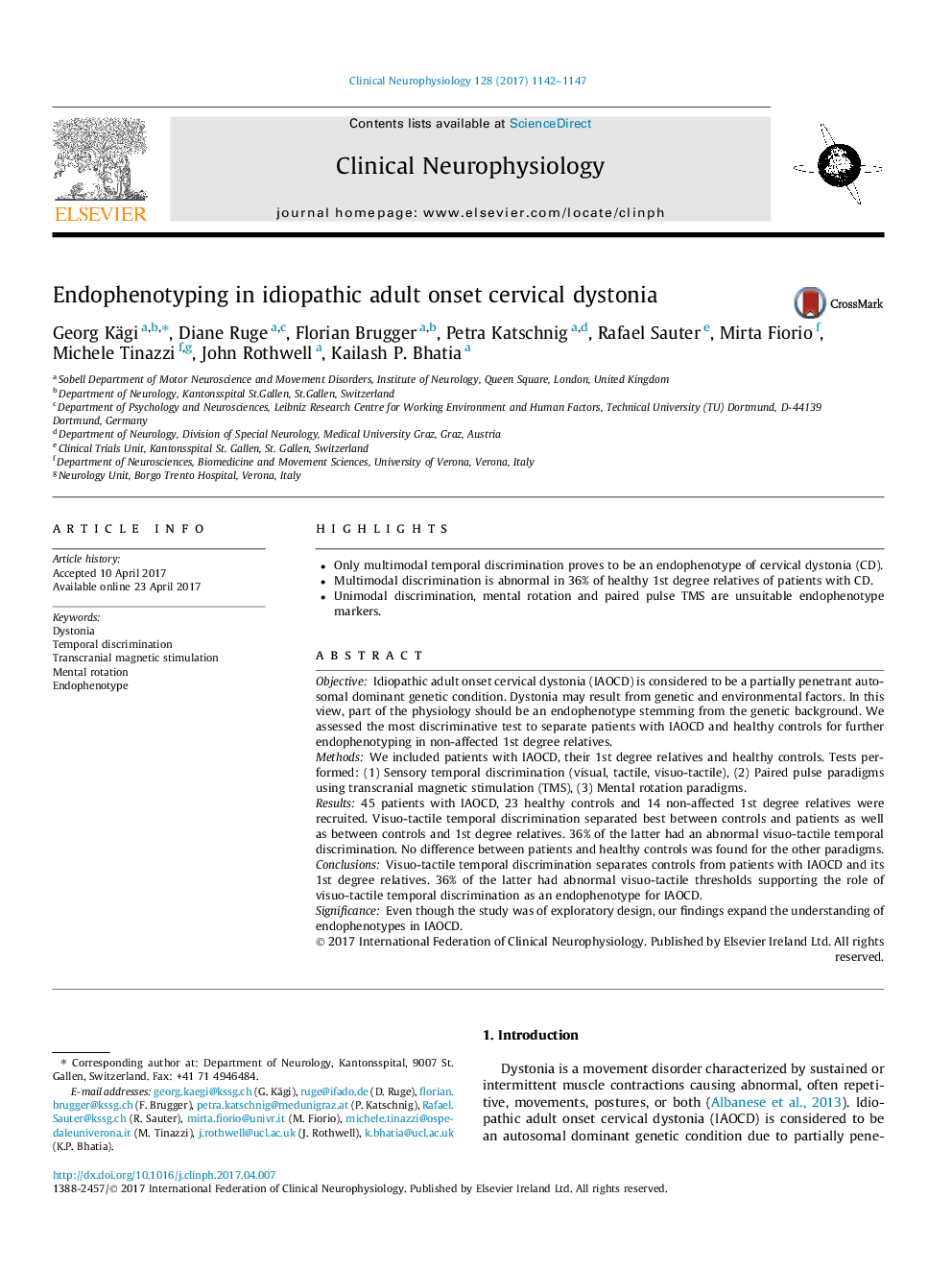| Article ID | Journal | Published Year | Pages | File Type |
|---|---|---|---|---|
| 5627832 | Clinical Neurophysiology | 2017 | 6 Pages |
â¢Only multimodal temporal discrimination proves to be an endophenotype of cervical dystonia (CD).â¢Multimodal discrimination is abnormal in 36% of healthy 1st degree relatives of patients with CD.â¢Unimodal discrimination, mental rotation and paired pulse TMS are unsuitable endophenotype markers.
ObjectiveIdiopathic adult onset cervical dystonia (IAOCD) is considered to be a partially penetrant autosomal dominant genetic condition. Dystonia may result from genetic and environmental factors. In this view, part of the physiology should be an endophenotype stemming from the genetic background. We assessed the most discriminative test to separate patients with IAOCD and healthy controls for further endophenotyping in non-affected 1st degree relatives.MethodsWe included patients with IAOCD, their 1st degree relatives and healthy controls. Tests performed: (1) Sensory temporal discrimination (visual, tactile, visuo-tactile), (2) Paired pulse paradigms using transcranial magnetic stimulation (TMS), (3) Mental rotation paradigms.Results45 patients with IAOCD, 23 healthy controls and 14 non-affected 1st degree relatives were recruited. Visuo-tactile temporal discrimination separated best between controls and patients as well as between controls and 1st degree relatives. 36% of the latter had an abnormal visuo-tactile temporal discrimination. No difference between patients and healthy controls was found for the other paradigms.ConclusionsVisuo-tactile temporal discrimination separates controls from patients with IAOCD and its 1st degree relatives. 36% of the latter had abnormal visuo-tactile thresholds supporting the role of visuo-tactile temporal discrimination as an endophenotype for IAOCD.SignificanceEven though the study was of exploratory design, our findings expand the understanding of endophenotypes in IAOCD.
